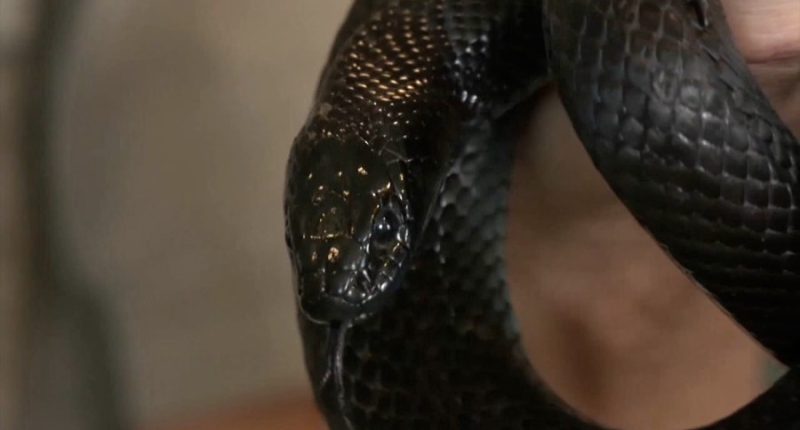Share this @internewscast.com

AUGUSTA, Ga. ()- Summer through early fall is the peak season for snake movement and mating.
Georgia and South Carolina are home to six venomous snake species.
The Copperhead, Cottonmouth/Water Moccasin, Eastern Diamondback Rattlesnake, Pigmy Rattlesnake, Canebrake/Timber Rattlesnake, and the Coral Snake are all species to be aware of.
But there are also nonvenomous snakes like rat snakes and black snakes.
They all usually hide in piles of vegetation, like leaves.
Experts say the best thing to do is remove those piles, so you won’t end up seeing them in your yard.
If you do spot a snake here’s a way you can tell if it’s venomous and not.
“Typically, venomous snakes resemble bodybuilders—they have thick, robust bodies and a somewhat intimidating appearance. They usually have a shorter length. On the flip side, the long, slender types are generally non-toxic ones that we see often. Among them are various garden and black snakes. King snakes, in particular, are beneficial because they prey on rattlesnakes,” explained Tonya Bonitatibus, the Riverkeeper and Executive Director of Savannah Riverkeeper.
She also says if you continue to see snakes around your house then there may be another problem.
“If your home is attracting a significant number of snakes, it might indicate a large population of mice and rats. So, if you notice a lot of snake activity around your residence, it’s likely because they’re finding plenty to eat. It’s worth investigating this,” she added.
If you do encounter a snake – the Savannah Riverkeeper says just back away slowly to avoid being bit.
And if you get bit by a snake; wash the area, call the poison center and get medical help right away. Do not use ice or a tourniquet.
Photojournalist: Dania Alawir








